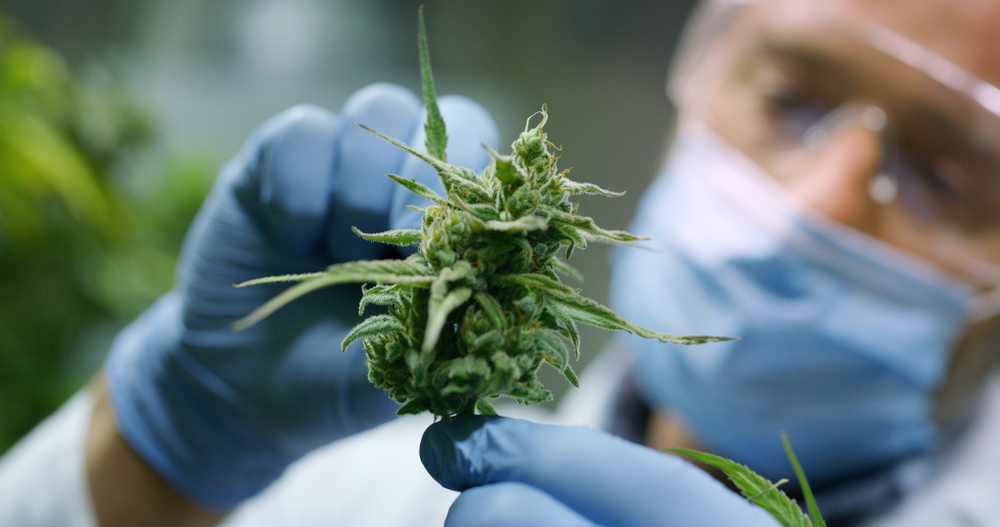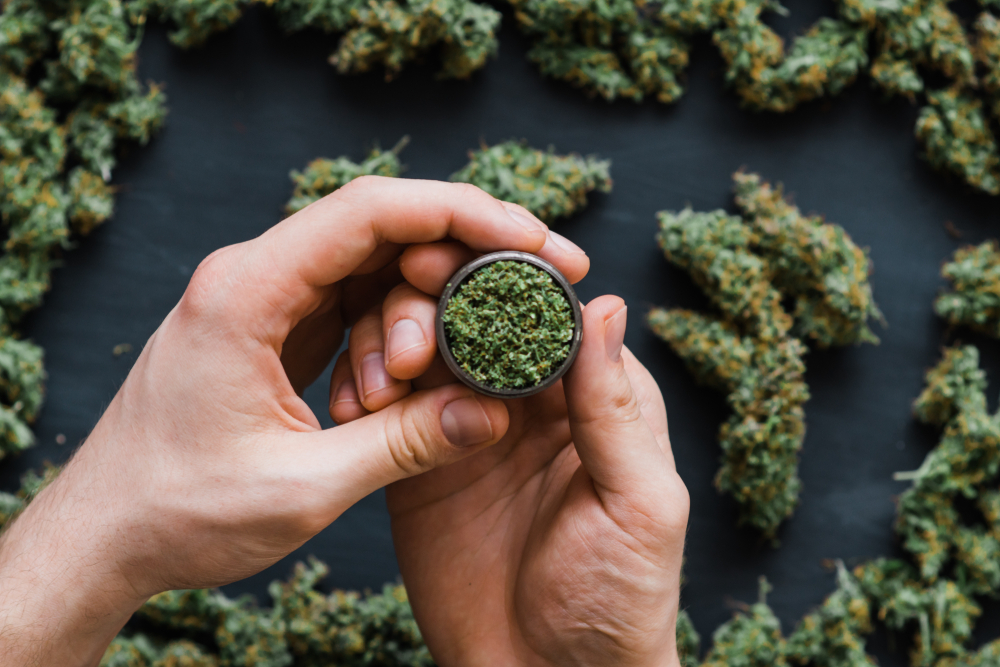Table of Contents
Introduction
In recent years, the spotlight has been shining brightly on cannabinoids, the naturally occurring compounds found in the cannabis plant. While most people are familiar with THC (tetrahydrocannabinol) and CBD (cannabidiol), another cannabinoid has been making waves in the scientific and medical communities: cannabigerol, or CBG.
Often referred to as the “stem cell” or “mother” cannabinoid, CBG is garnering attention for its potential therapeutic properties. In this article, we will delve into the world of CBG and explore its emerging role in health and wellness.

Brief overview of cannabinoids’ rising popularity
Over the past decade, cannabinoids have witnessed an unprecedented surge in popularity, captivating the attention of researchers, medical professionals, and the general public.
Cannabinoids, the naturally occurring compounds found in the cannabis plant, have gained recognition for their potential therapeutic benefits and their ability to interact with the body’s endocannabinoid system.
The widespread acclaim of cannabinoids, such as THC and CBD, stems from their diverse applications, ranging from pain management and anxiety relief to sleep regulation and anti-inflammatory properties.
This rising popularity has fueled a surge in scientific research, leading to an increased understanding of cannabinoids’ mechanisms of action and their potential in revolutionizing various fields of medicine and wellness.
Introduction to CBG as a lesser-known cannabinoid
While THC and CBD have taken the limelight in discussions surrounding cannabinoids, there exists a lesser-known yet captivating compound within the cannabis plant: cannabigerol, or CBG. Often overshadowed by its more famous counterparts, CBG is an intriguing cannabinoid that has recently gained attention for its unique properties and potential therapeutic benefits.
While its presence in cannabis is relatively low compared to other cannabinoids, the emerging research on CBG suggests that it holds promise in various areas, ranging from anti-inflammatory effects to potential neuroprotective properties. As we delve into the realm of CBG, we uncover a hidden gem within the cannabis plant that deserves recognition for its distinctive attributes and potential contributions to health and wellness.
CBG’s unique properties and potential therapeutic benefits make it an exciting area of research in the rapidly expanding field of cannabinoid-based therapies. As more research emerges on CBG, it’s potential to revolutionize the landscape of health and wellness becomes increasingly apparent.
CBG’s non-psychoactive nature and potential benefits for conditions ranging from inflammation to neurodegenerative disorders make it a compelling candidate for therapeutic use.
Understanding CBG
CBG is a non-intoxicating cannabinoid, meaning it does not produce the psychoactive effects commonly associated with THC. It is present in the cannabis plant in its acidic form, CBGA (cannabigerolic acid), which is the precursor to other cannabinoids like THC, CBD, and CBC (cannabichromene).
As the cannabis plant matures, enzymes convert CBGA into various cannabinoids, leaving behind only trace amounts of CBG.
Definition and characteristics of CBG
CBG, short for cannabigerol, is a cannabinoid found in the cannabis plant. It is one of the many chemical compounds present in cannabis, alongside well-known cannabinoids like THC and CBD. CBG is considered a minor cannabinoid, typically found in smaller quantities than THC and CBD.
However, what sets CBG apart is its unique chemical structure and potential therapeutic properties. Like other cannabinoids, CBG interacts with the body’s endocannabinoid system, which plays a crucial role in regulating various physiological processes.
CBG is non-psychoactive, meaning it does not produce the intoxicating effects commonly associated with THC. This characteristic makes CBG an appealing option for individuals seeking the potential health benefits of cannabinoids without the mind-altering effects.
As research into CBG continues to unfold, scientists are uncovering its potential applications in addressing inflammation, neurodegenerative diseases, and other health conditions.

CBGA is the precursor to CBG and other cannabinoids
CBGA, or cannabigerol acid, is the acidic form of cannabigerol (CBG) and serves as the precursor to various cannabinoids found in the cannabis plant. Initially, cannabis plants produce CBGA through enzymatic reactions in the early stages of growth.
As the plant matures, enzymes transform CBGA into other cannabinoids, including THC, CBD, CBC, and, to a lesser extent, CBG. This process is known as decarboxylation, where heat or light removes a carboxyl group from CBGA, converting it into its corresponding cannabinoid.
Consequently, CBGA acts as a foundational cannabinoid, paving the way for synthesizing other cannabinoids with distinct properties and potential therapeutic benefits. Although CBGA is converted into different cannabinoids during the plant’s growth cycle, only trace amounts of CBG remain in the final product, making it a relatively rare cannabinoid to find in significant concentrations.
Nonetheless, researchers are increasingly exploring the potential of CBG and its unique characteristics, leading to an expanding body of knowledge on its possible therapeutic applications.
Explanation of CBG as a non-psychoactive cannabinoid
CBG is classified as a non-psychoactive cannabinoid, meaning it does not produce the intoxicating effects associated with THC. Unlike THC, which binds directly to cannabinoid receptors in the brain, CBG has a minimal affinity for the CB1 receptors, which are primarily responsible for the psychoactive effects.
CBG’s non-psychoactive nature makes it an attractive option for individuals seeking the potential therapeutic benefits of cannabinoids without the mind-altering effects. This characteristic allows CBG to be utilized in various applications, such as medicinal treatments, where psychoactive effects are not desirable.
The non-psychoactive nature of CBG also makes it more widely accessible and legally permissible in many regions where THC is heavily regulated. CBG’s lack of psychoactivity does not diminish its potential therapeutic properties, as it interacts with other receptors in the body’s endocannabinoid system, contributing to its potential health benefits.
Therapeutic Potential of CBG
CBG, or cannabigerol, holds significant therapeutic potential. Early research suggests that CBG may have a range of health benefits, including potential anti-inflammatory, neuroprotective, and pain-relieving properties. CBG has also shown promise in addressing glaucoma-related symptoms, supporting appetite stimulation, and demonstrating potential in combating certain types of cancer.
While further studies are needed to fully understand CBG’s mechanisms of action and its specific therapeutic applications, its unique properties make it an intriguing compound for future exploration in the field of therapeutic interventions.
Highlighting CBG’s potential as an anti-inflammatory agent
CBG (cannabigerol) has garnered attention for its potential as a powerful anti-inflammatory agent. Inflammation is a natural response by the body’s immune system to protect against injury or infection. However, chronic inflammation can contribute to the development and progression of various diseases. Preliminary research suggests that CBG has properties that may help alleviate inflammation and its associated symptoms.
Studies have shown that CBG interacts with the body’s endocannabinoid system, specifically targeting certain receptors involved in regulating immune responses and inflammation. CBG has been found to modulate the production of pro-inflammatory molecules and cytokines, effectively reducing inflammation in animal models.

Discussion of CBG’s role in addressing glaucoma-related symptoms
CBG has shown potential in reducing intraocular pressure (IOP). Glaucoma is often associated with elevated IOP, which can cause damage to the optic nerve and vision loss. Studies have suggested that CBG has the ability to reduce IOP, potentially providing a therapeutic benefit for glaucoma patients.
Inflammation plays a significant role in the progression of glaucoma. CBG has been found to possess anti-inflammatory properties, which may help alleviate the inflammation associated with glaucoma and contribute to better management of the condition.
Glaucoma involves the degeneration of retinal ganglion cells and the optic nerve. CBG has shown neuroprotective properties in preclinical studies, indicating its potential in protecting the retinal cells and optic nerve from damage, thus slowing down the progression of glaucoma.
CBG may also help manage pain associated with glaucoma. Glaucoma can be accompanied by eye pain, headaches, and discomfort. CBG has been reported to have analgesic properties, which could potentially alleviate pain symptoms in glaucoma patients, enhancing their quality of life.
Some studies have suggested that CBG may help improve blood flow to the eyes, which could have a positive impact on the health of the optic nerve and overall ocular function.
CBG it’s a non-psychoactive cannabinoid: Unlike THC (tetrahydrocannabinol), CBG is a non-psychoactive cannabinoid. This means that it does not produce the psychoactive effects typically associated with cannabis use. This aspect makes CBG a potentially attractive option for glaucoma patients who may benefit from cannabis-based therapy without experiencing unwanted psychoactive effects.
Exploration of CBG’s antimicrobial properties and potential as an antibacterial agent
CBG exhibits promising antimicrobial properties, which means it has the ability to inhibit the growth or kill certain microorganisms, including bacteria.
CBG also shows promise against drug-resistant bacteria. Antibiotic resistance is a growing concern in modern medicine. CBG has demonstrated activity against various drug-resistant bacteria, including methicillin-resistant Staphylococcus aureus (MRSA) and multidrug-resistant strains of Escherichia coli (E. coli). This suggests CBG’s potential as an alternative or adjunct treatment option for antibiotic-resistant infections.
Studies have indicated that CBG may exert its antibacterial effects through multiple mechanisms. It has been shown to disrupt bacterial cell membranes, inhibit biofilm formation (a protective layer that bacteria develop), and interfere with bacterial quorum sensing (communication system used by bacteria).
Research suggests that CBG exhibits antibacterial activity against a range of bacterial species, including both Gram-positive and Gram-negative bacteria. This broad spectrum of activity is promising for its potential applications in combating various bacterial infections.
CBG has also been studied in combination with other cannabinoids, such as cannabidiol (CBD) and cannabichromene (CBC), and has shown synergistic effects in inhibiting bacterial growth. This indicates the potential for enhanced antibacterial activity when CBG is used in conjunction with other cannabinoids.
in the end the antimicrobial properties of CBG open up potential applications in various areas, including the development of new antibacterial drugs, topical formulations for skin infections, and the prevention or treatment of bacterial infections in different medical settings.
Brief overview of CBG’s potential in appetite stimulation, neuroprotection, and anti-cancer effects
-Appetite Stimulation: CBG has shown potential as an appetite stimulant. It interacts with the body’s endocannabinoid system, specifically targeting the CB1 receptor, which is involved in regulating appetite and food intake. CBG may increase appetite, making it potentially beneficial for individuals experiencing appetite loss or certain medical conditions where increased calorie intake is necessary.
-Neuroprotection: CBG exhibits neuroprotective properties, meaning it may help protect nerve cells from damage or degeneration. Studies have shown that CBG can help protect against neurodegenerative conditions, such as Huntington’s disease, by promoting neurogenesis (the formation of new neurons) and reducing inflammation in the brain. CBG’s neuroprotective effects suggest its potential use in managing various neurological disorders.
-Anti-Cancer Effects: Preliminary research suggests that CBG may have anti-cancer properties CBG has been found to inhibit the growth of certain cancer cells, including colorectal cancer cells and breast cancer cells. It may achieve this by interacting with various pathways and receptors involved in cancer cell proliferation, apoptosis (cell death), and angiogenesis (formation of new blood vessels to support tumor growth). However, further research is needed to understand the full extent of CBG’s anti-cancer effects and its potential application in cancer treatment.

Combining CBG with Other Cannabinoids
Combining CBG with other cannabinoids holds potential benefits and synergistic effects. Cannabinoids such as CBD (cannabidiol) and THC (tetrahydrocannabinol) are often combined with CBG to enhance therapeutic outcomes. For instance, the combination of CBG and CBD may provide enhanced pain relief, anti-inflammatory effects, and anxiety reduction.
This is due to the different mechanisms of action and target receptors of each cannabinoid. Additionally, combining CBG with THC may modulate the psychoactive effects of THC, potentially reducing the intensity of psychoactivity while still benefiting from the therapeutic properties of both compounds.
However, the specific ratios and dosages of cannabinoid combinations should be carefully considered to achieve the desired effects and minimize potential adverse reactions. As with any cannabinoid therapy, consulting with healthcare professionals or medical experts knowledgeable in cannabis medicine is essential for personalized guidance and appropriate use.
Introduction to the concept of the entourage effect
The concept of the entourage effect highlights the synergistic interactions and enhanced therapeutic benefits that occur when multiple compounds, such as cannabinoids and terpenes, work together in a plant-based formulation. It suggests that the whole is greater than the sum of its parts.
In the context of cannabis, it means that the combined action of various cannabinoids, such as CBD, THC, CBG, and others, along with the presence of aromatic compounds like terpenes, can produce more significant effects compared to isolated compounds alone.
This phenomenon is thought to result from the compounds working in harmony and influencing each other’s actions, thereby amplifying their individual therapeutic properties. The entourage effect has important implications for optimizing the medicinal potential of cannabis-based products and underscores the significance of utilizing full-spectrum or broad-spectrum formulations to harness the collective power of the plant’s constituents.
Further research is needed to fully understand the mechanisms and clinical implications of the entourage effect, but it serves as a compelling framework for exploring the vast therapeutic potential of whole-plant medicine.
Explanation of how CBG interacts with other cannabinoids
CBG, or cannabigerol, interacts with other cannabinoids through a complex interplay within the body’s endocannabinoid system (ECS). When consumed together with other cannabinoids, such as CBD or THC, CBG can modulate their effects and enhance the overall therapeutic outcomes.
This interaction occurs because CBG binds to various receptors in the ECS, including CB1 and CB2 receptors, influencing their activity. CBG can also inhibit the enzyme that breaks down anandamide, a natural endocannabinoid, leading to increased levels of anandamide in the body.
This interaction between CBG and other cannabinoids contributes to the entourage effect, where the combined action of multiple compounds produces synergistic effects and a more comprehensive range of therapeutic benefits.
The specific ratios and combinations of cannabinoids will determine the unique effects experienced, making it important to explore and understand these interactions to unlock the full potential of cannabis-based therapies.
Potential benefits and synergistic effects of combining CBG with CBD and THC
-Enhanced therapeutic effects: Combining CBG with CBD and THC can potentially enhance the overall therapeutic benefits. The different cannabinoids may work together synergistically to provide more comprehensive relief for various symptoms and conditions.
-Balanced psychoactive effects: CBG has been found to modulate the psychoactive effects of THC. Combining CBG with THC may help reduce the intensity of THC-induced psychoactivity, leading to a more balanced and manageable experience.
-Amplified anti-inflammatory properties: Both CBG and CBD have demonstrated anti-inflammatory properties. Combining these cannabinoids may lead to stronger anti-inflammatory effects, potentially beneficial for managing inflammatory conditions such as arthritis or inflammatory bowel disease. Increased pain relief: CBD, THC, and CBG all possess analgesic properties. When combined, these cannabinoids may work together to provide enhanced pain relief for various types of pain, such as neuropathic pain or chronic pain associated with conditions like fibromyalgia.
-Potential anti-cancer effects: Preliminary research suggests that combining CBG with CBD and THC may have synergistic effects in inhibiting the growth of cancer cells. This combination may work together to modulate various pathways involved in cancer cell proliferation and apoptosis.
-Improved mood and anxiety management: CBD has been studied for its anxiolytic and mood-stabilizing properties, while CBG may also possess anxiolytic effects. Combining CBG with CBD may offer improved relief from anxiety symptoms and help promote a more balanced mood.
-Expanded therapeutic applications: The combination of CBG, CBD, and THC opens up a wider range of potential therapeutic applications. Each cannabinoid brings its unique properties, and their combination allows for more tailored and targeted approaches to address specific symptoms or conditions.
Conclusion
CBG, or cannabigerol, shows promise in promoting health and wellness. Early studies indicate therapeutic benefits, including addressing glaucoma symptoms, antimicrobial properties, appetite stimulation, neuroprotection, and anti-cancer effects. Combined with other cannabinoids, CBG may enhance therapeutic benefits through the entourage effect.
As regulations evolve, CBG products may become more accessible. However, further research is needed. The future of CBG in cannabinoid-based therapies is promising, with potential for improved treatments and well-being. Continued research and responsible integration will optimize patient outcomes and advance cannabinoid therapeutics





